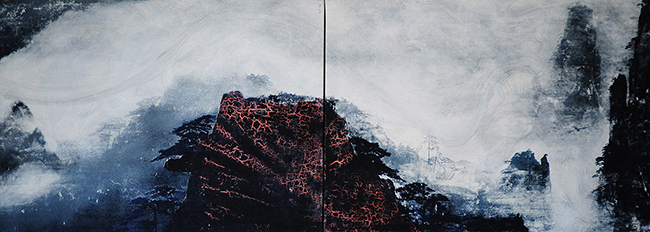Stephane Korb’s artistic journey is a story of progress across multiple creative landscapes. His roots stretch back to the underground music scene of the 1970s, where he played bass for the avant-garde band Fille qui mousse. It was a period defined by raw energy, and Korb was at the center, exploring sound’s possibilities. This early experience with music laid the groundwork for his later work, teaching him the importance of rhythm, balance, and the unexpected in art.

In 1971, Korb took a significant step into the world of sound engineering at Studio Davout, one of the most renowned recording studios in France. Here, he honed his technical skills and learned to listen deeply, not just to music but to the stories behind it. His time at Studio Davout allowed him to collaborate with various artists and sharpen his ear for detail, a skill that would later translate into his visual work.
By the late 1970s, Korb transitioned into photojournalism, working as an assistant to the famous photographer Marc Riboud. This collaboration exposed him to the world of visual storytelling. He began covering culture, travel, and current events, capturing moments that spoke volumes without words. His work was published internationally, with assignments such as photographing Daniel Barenboim in the USA, Rostropovich in Moscow, and Malcolm Forbes with his collection of imperial Fabergé eggs. These experiences enriched Korb’s understanding of human emotion and expression, which he later channeled into his paintings.
In 2000, Korb made a significant shift from photography to painting, a medium that allowed him to explore his personal and collective memories more deeply. His transition to painting wasn’t abrupt but rather a natural progression from his earlier work. He began experimenting with pop art techniques, a style that resonated with his desire to capture the essence of modern life. His paintings are a reflection of the world he has seen and the memories he holds dear. They are bold, colorful, and infused with a sense of nostalgia.
One of his artworks, “Huang Shan,” is a testament to his approach to art. The piece is a diptych, measuring 65 x 160 cm, and was created using a combination of acrylic, medium, and image transfer through a handmade silkscreen process. The silkscreen ink on canvas adds a unique texture to the work, giving it a tactile quality that invites viewers to look closer. The piece is part of the Y. Bizenjima collection in Tokyo, a city that has become a second home to Korb.
Korb’s artistic process is deeply influenced by his experiences in both France and Japan. He splits his time between these two countries, drawing inspiration from the contrasting cultures and landscapes. In Japan, he finds peace in the serene landscapes and traditional art forms, which often inspire the themes and techniques in his work. In France, he is surrounded by the rich history and vibrant art scene that constantly pushes him to experiment and progress.
Apart from his visual art, Korb is also an accomplished author. He has written several books, including ones on Australia, Japan, Yves Montand, and Marc Riboud. His writing, like his art, is a reflection of his diverse experiences and his keen observation of the world around him. Whether through words or images, Korb’s work consistently explores the relationship between memory and identity, capturing the fleeting moments that define our lives.
In his personal life, Korb continues to explore his love for music, playing blues on his guitar. Music remains a constant in his life, a thread that weaves through his various creative endeavors. It is this love for sound and rhythm that can be felt in his paintings, where every brushstroke seems to follow a silent melody.
Stephane Korb’s journey as an artist is a testament to his relentless pursuit of creativity. From the underground music scene to the world of fine art, he has continually reinvented himself, each time finding new ways to express his vision. His work is a celebration of life in all its forms, capturing the beauty of the ordinary and the extraordinary. Whether through the lens of a camera or the strokes of a brush, Korb continues to share his unique perspective with the world, inviting us all to see the world through his eyes.

